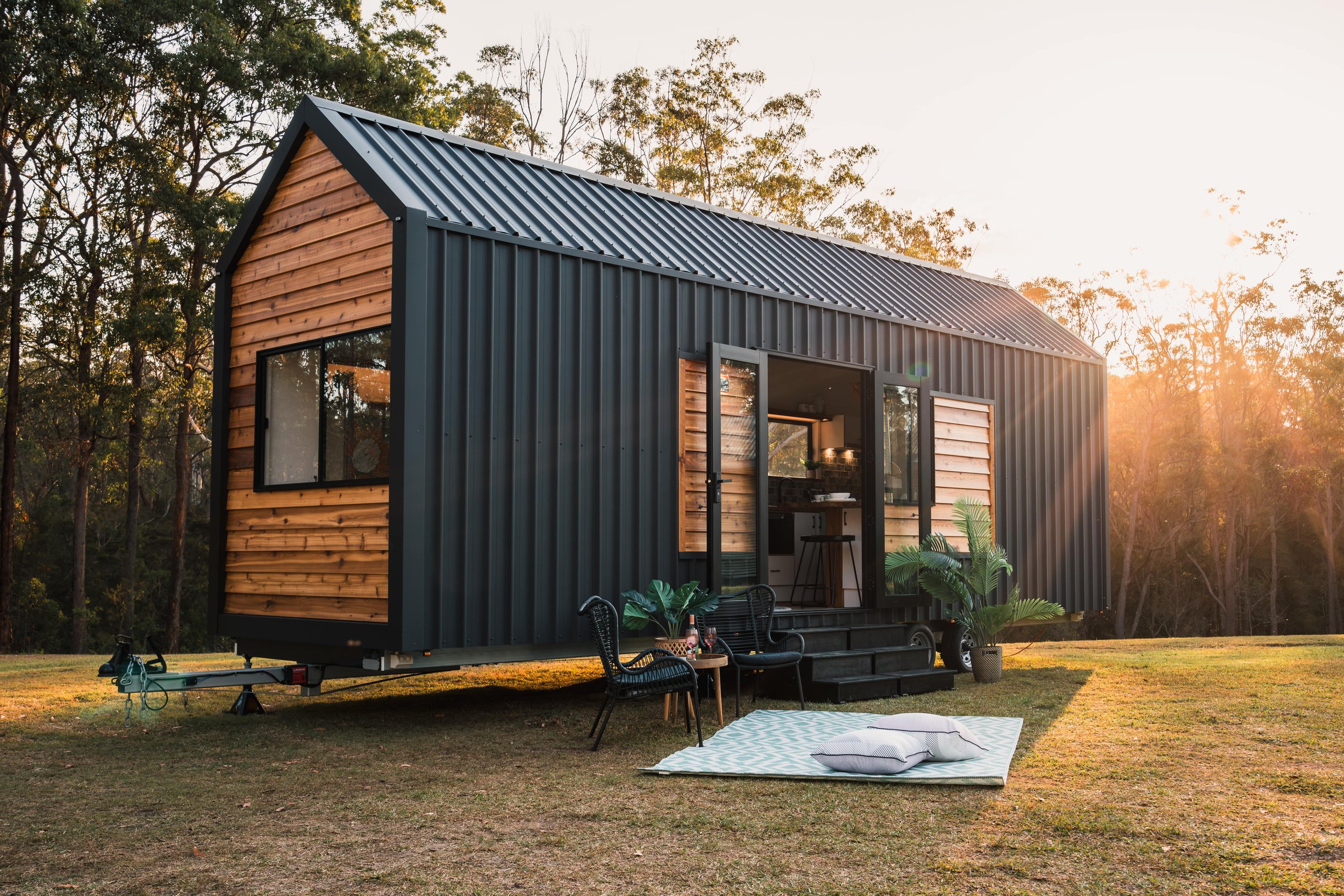tiny houses for Vineyards
When it comes to finding the perfect complement for your vineyard, the idea of a tiny house might not be the first thing that comes to mind. However, the charm, functionality, and unique appeal of tiny houses in a vineyard setting is undeniable.
In this guide, we explore the unique appeal of tiny houses nestled within vineyards.
Why Choose a Tiny House for Vineyards
Tiny houses in Australia are increasingly becoming a popular choice for vineyard owners for a number of compelling reasons.
Living in a vineyard brings with it a deep connection to nature. The compact size allows easy integration without compromising the vineyard's beauty.
In a tiny house, every inch of space is thoughtfully utilised, fostering a sense of coziness whilst being able to bask in the unique views provided by a vineyard.
For vineyard owners seeking a peaceful retreat from the hustle and bustle of city life, a tiny house offers the perfect blend of comfort and tranquillity. Maybe your vineyard is a weekender, or maybe you’d like to invite others to enjoy the unique views and atmosphere your property provides and have them stay in a small footprint dwelling. A tiny house is perfect for this and also an affordable option to expand the use of your property.
Benefits of Tiny Houses for vineyards
COST-EFFECTIVENESS - Building and maintaining a tiny house is generally more budget-friendly compared to larger structures. This financial flexibility allows vineyard dwellers to invest more in their winemaking endeavours, enhancing the overall quality of the vineyard whilst sharing the beauty.
SUSTAINABLE LIVING - Embracing sustainability aligns perfectly with the agricultural nature of vineyards, creating a holistic environment where both the land and its inhabitants thrive.
MOBILITY AND FLEXIBILITY - The portability of tiny houses in Australia provides unmatched flexibility, allowing vineyard owners to relocate their living space based on seasonal needs, harvest cycles, or changing weather conditions. This adaptability is a valuable asset in the dynamic world of winemaking.
INTEGRATION WITH NATURE - Tiny houses effortlessly blend with the natural landscape, offering unobstructed views of rolling hills and stunning rows of vines. More of the land is dedicated to grape cultivation, promoting a symbiotic relationship between the living space and the vineyard.
GET INSPIRED BY OUR CUSTOMERS
Settler
Manjimup, WA
Guest accommodation on Airbnb
“Easily the finest quality and best crafted tiny homes in the business. Couldn’t be happier with the product, service and experience so far. Great team and excellent to deal with.”
Considerations Before Buying a Tiny HousE FOR vineyards
1. Local Zoning and Regulations - Before investing in a tiny house, familiarise yourself with local zoning laws and regulations. Ensure that your vineyard property allows for the parking and habitation of such structures in the way you are hoping to utilise it.
2. Utilities and Infrastructure - Assess the availability of utilities such as water, electricity, and waste disposal. Off-grid solutions may be necessary in some vineyard locations, so plan accordingly to ensure a seamless living or guest experience.
3. Design Integration - Choose a structure that complements the vineyard aesthetic. Consider features like large windows for panoramic views and outdoor spaces for al fresco living.
4. Community Engagement - While the allure of a secluded vineyard lifestyle is strong, inviting members of the community to share in the experience can be a delight. It can also be immensely practical for a business to have somewhere to host business or other associates.
5. Weather Considerations - Häuslein’s Tiny houses are built to withstand many seasonal variations, from snowy alpine regions to tropical climates. Tiny houses are efficient to heat and cool and keep comfortable. Some models offer space for a cozy fireplace.
6. Future Expansion - Anticipate future growth and changes in your vineyard. Design the tiny house with expansion in mind, whether it's for a growing family or the need for additional workspace or new farm experiences.
7. Site Selection - Choose a suitable location within your vineyard for placing your tiny house, taking into account factors such as accessibility, views, sunlight exposure, and proximity to utilities. Conduct a thorough site assessment to determine the optimal placement that maximises both functionality and aesthetic appeal. Keep in mind that a level site, ideally a slab or road base is preferable.
8. Maintenance and Long-Term Viability - Plan for the long-term maintenance and viability of your tiny house within the context of vineyard management. Häuslein Tiny Houses are built to last and age beautifully. Solid timbers, plywoods, and other high-quality build materials are used to stand the test of time and to be able to be easily refurbished and refreshed to look as new.
The decision to embrace tiny house living in Australia amidst the vineyards represents a harmonious fusion of sustainable values, practical considerations, and a deep appreciation for the natural beauty of the land. By carefully considering the outlined aspects, you can create a harmonious haven where the vines flourish, and your tiny house becomes an integral part of the winemaking journey.





